Whenever we want to charge our mobile device, we make use of a USB cable. When we want to print a document, a USB cable enables us to transfer the file to the printer. The role that USB cables play in our day-to-day life cannot be overstated.
In this post, we’re going to explore, in-depth, what USB cables are all about – their make-up, types, application, and cabling are all aspects we’ll delve into. Furthermore, how USB cables differ from other means of connection will be discussed. After that, we’ll examine the packaging and pricing of USB cables.
Get Your Free Sample!
Explore our custom services now. Leave your email, and we'll get in touch!
CHAPTER 1: What is a USB Cable?
Right from their inception in the early 90s, they’ve continued to play an integral role in our lives. Interestingly, the evolution of USB cables has been super-dynamic. It is due to the ever-growing demand for faster and more reliable connections. We can say with near certainty that the future of USB cables is indeed bright.
USB (short for Universal Serial Bus) was developed in 1994 by seven companies: Microsoft, IBM, Compaq, Intel, Nortel, DEC, and NEC. It was created to ease the connection of peripheral devices – like printers, keyboards, mouse, disk drives and video cameras – to the computer for communication and the supply of power. The standardization of USB development by USB Implementer Forum (USB-IF) ensures that a pre-defined specification designs USB.
USB Connectors
Regarding size, USB connectors are classified into; standard format, mini and micro. Regarding speed, they are classified into low, full, high, SuperSpeed and SuperSpeed+. A USB connector has two ends labeled as A and B. The A end is commonly the standard format and is connected to the computer. The B end is usually the mini or micro, and it is connected to the device. The ends of a USB connector are called plugs, while the opening in the computer or device that receives the plug is called the receptacles.
Objective
Before USB connectors were adopted, computer connectors came in an inconsistent variety of design and sizes. Using USB in the figure eliminates this inconsistency. The standardization of USB development greatly simplified the connection interface between computers and peripheral devices. This simplification is evident in several ways.
From the perspective of manufacturers, the USB standard eliminates the need to develop proprietary connectors. Manufacturers have great flexibility in the design of their devices since the variety of USB connectors that will ensure that they find one that is compatible with their design.
No manual adjustment is required for end-users on the devices when you plug a USB cable, i.e., they’re self-configuring. When plugging in the USB connectors, there is no need to reboot the computer devices as they are hot-swappable. Because USB development is standardized and regulated, we are guaranteed that USB cables will not cause any havoc to our devices.
Limitation
USB cables are usually short because they were created with the intention that peripheral devices will be near the host device. Therefore, inter-room connection via a USB cable is not feasible except through the use of gateways. USB devices cannot ensure communication between two hosts. A host can only communicate with a peripheral device individually; the i.e., broadcast signal is not possible. Even with the use of converters, USB cables might not work well with some legacy interfaces.
From the end of USB manufacturers, using the USB standard requires adherence to strict policies and complex protocols. Manufacturers have to pay the USB-IF to obtain a USB ID and to get the permission to use the USB logo on their product.
Related Standard.
With the substantial progress that has been made in wireless technology, the USB-IF has started the development of a USB based on wireless networking. Wireless USB is more efficient and faster (up to 480 Mbit/s) than cabled USB and will replace them shortly.
InterChip USB is a chip-to-chip variation of the USB that does away with the conventional transceivers present in a standard USB. They are more compact and power-efficient than a normal USB.
CHAPTER 2: USB Cable Type
USB Type A (or USB Standard-A connector)
Most host devices usually make use of a USB A connector. The USB-A socket is primarily used for downstream communication from a host to a peripheral device and not the other way around. The configuration of the host is such that a 5V DC power is supplied to the VBUS pin. It makes it impracticable to use USB-A for upstream connection from a peripheral to a host device. As a rule of thumb, it is advisable to ensure that one of the ends of any USB cable purchased is USB- A.
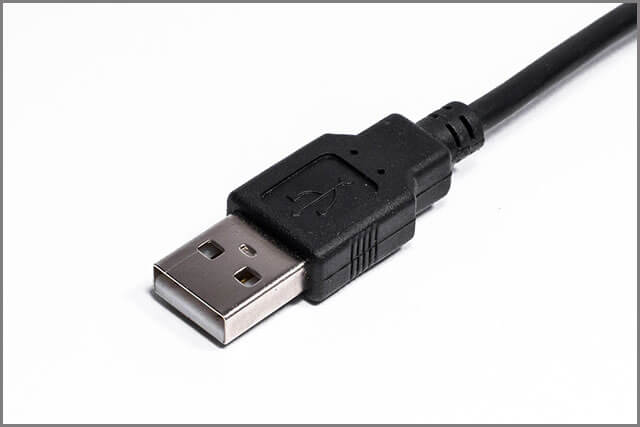
Figure 1: USB Type A
USB Type B (or USB Standard B connector)
When you look at the ports on your printer or bigger peripheral devices, they are designed to suit a USB-B connector. This USB type was created to prevent accidental connection of two host devices. With better USB connector types that are being produced today, the USB-B connector is gradually running out of fashion.
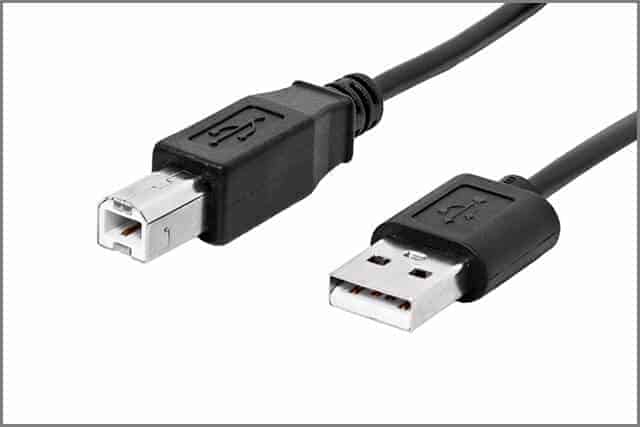
Figure 2: USB Type B
USB Type C
USB-C connectors are one of the latest USB interfaces in existence today. Like USB-A connector, they are used on host ports or devices with upstream sockets. Some new generation laptops and mobile devices have UBB-C connectors. USB-C connectors make use of the USB 3.1 standard and have a transfer speed of up to 10Gbps. They can also transmit higher power and serve as an alternative to HDMI for transferring video signals.
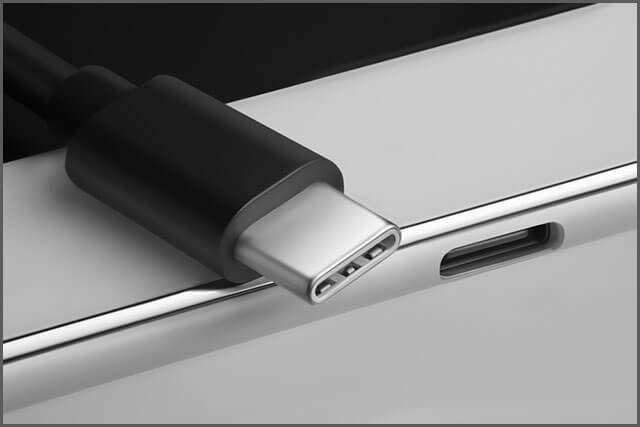
Figure 3: USB Type C
USB Mini B
USB Mini B is a smaller version of the USB Type B for peripheral devices. By default, they contain five pins. However, an extra pin is added to enable USB On-The-Go (OTG). USB OTG allows peripheral devices to function as a host device.
The USB Mini B is predominant with the earlier versions of smartphones and digital cameras. They are now referred to as “legacy connectors” because the sleeker designs of modern phones no longer make use of them.
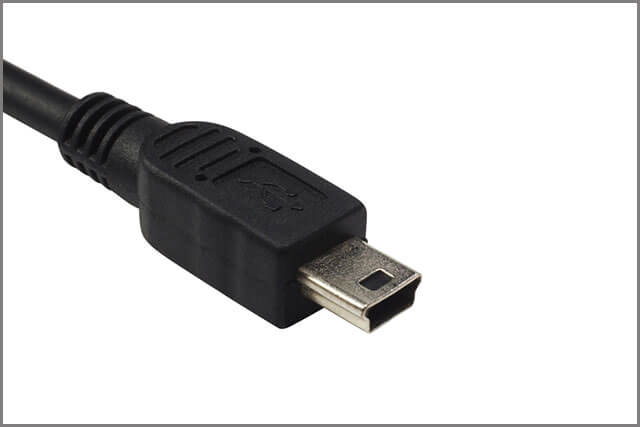
Figure 4: USB Mini B
USB Micro B
The USB micro B is a reduced version of the Mini B. They were created to fit perfectly with the slimmer devices that are now ubiquitous. By default, they contain five pins and also allow USB OTG.
USB 3.0 Type A
The USB 3.0 Type A connector is primarily used for downstream connection from host devices. They share a similar design with USB 2.0 and USB 1.1. However, they possess additional pins that are absent in USB 2.0 A. This provides them with a greater bandwidth of 5Gbps and the ability to transmit lower data rate with backward compatibility to USB 2.0 ports. Also, they are colored blue and labeled “SS” to differentiate them from earlier designs.
USB 3.0 Type B
They are suited for peripheral devices like printers. They are the higher version of USB Type B. Therefore; they are equipped for SuperSpeed application and also for carrying USB 2.0 low-speed data at the same time.
Due to their different configuration, a USB 3.0 plug cannot fit into a USB 2.0 socket. However, the mating of USB 2.0 B male plug is possible with devices with USB 3.0 Type receptacles.
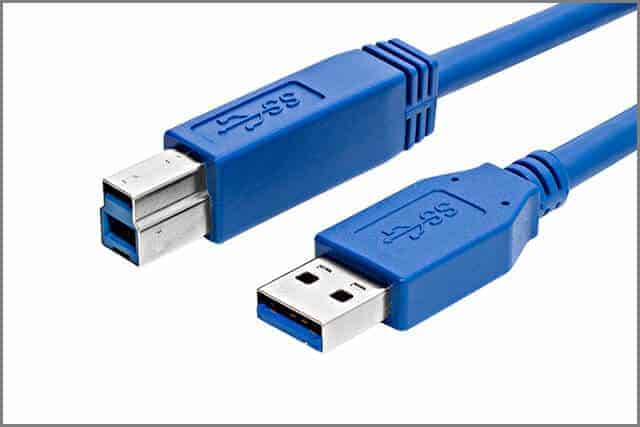
Figure 5: USB 3.0 Type B
USB 3.0 Micro B (or SuperSpeed Micro USB B connector)
The USB 3.0 Micro B is just a USB 2.0 Micro B controller with five additional pins. These added pins are what increases the data transfer speed of the USB 3.0 Micro B. At the same time,These connectors are found on 3.0 devices like hard drives, cell phones, and cameras.
Due to their different design configuration, USB 3.0 Micro B plug cannot fit into a USB 2.0 B socket. However, the mating of a USB 2.0 Micro B male plug is possible with devices that have USB 3.0 Micro B receptacles.
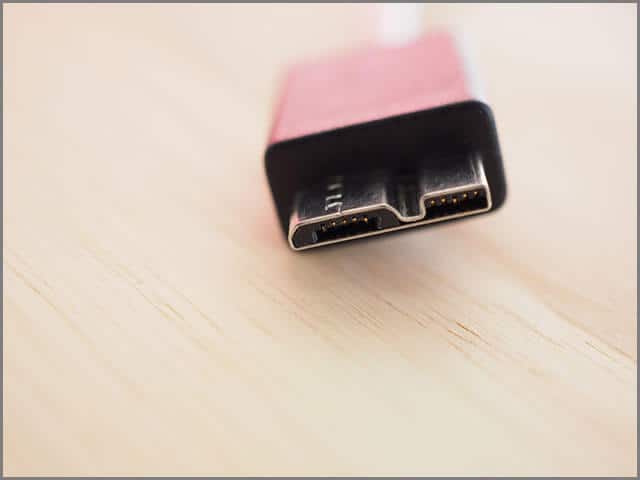
Figure 6: USB 3.0 Micro B
Due to their high data transfer speed, USB 3.0 Micro B connectors are now finding application in Machine Vision and 3D imaging.
USB 3.0 Internal Connector (20 Pin)
Intel invented the USB 3.0 Internal connector. It is used for connecting the external USB SS ports on the front panel to the motherboard. The 20-pin internal slot contains two lines of USB 3.0 signal channels. These channels can accommodate a maximum of two separate USB 3.0 ports. However, one channel data bandwidth cannot be shared.
USB 3.1 Internal Connector
Also created by Intel, the USB 3.1 internal connector cables are used to connect the front panel of USB ports to the motherboard. They also contain 20 pins but possesses a stronger design.
CHAPTER 3: USB Cable Application Field
USB cables offer a wide range of practical applications, from mass storage to MTP. Some of the common applications include;
USB mass storage / USB drive
We all make use of flash drives and hard drives to store data. It is possible, thanks to USB cables. USB mass storage devices can also be used to boot computers. Although, they are not designed primarily to replace the primary bus for the internal storage of a computer. However, this ability makes hot-swapping operation feasible.
Similarly, USB storage devices can be used to run software on a computer without actually installing the software on the host computer.
Media Transfer Protocol (MTP)
MTP was developed by Microsoft and provides more access to the device file system than USB mass storage. Primarily, it was created for portable media devices. However, they are now being adopted as the primary storage in Android OS and Windows Phone 8 and 7. The major challenge with MTP is that it does not function in other operating systems apart from Windows OS.
Human interface devices (HIDs)
Human interface devices like keypads and joysticks are now using USB instead of MIDI or PC game port connectors.
For older computers that have PS/2 connectors, USB-to-PS/2 adapter can be used to connect them with USB mice and keyboards. Similarly, converters also exist that can be used to connect Ps/2 mice and keyboards to a USB port.
USB Cable–Device Firmware Upgrade (DFU)
DFU uses a mechanism independent of the vendor and device to upgrade the firmware of a USB device. Fixing errors requires such an upgrade. During a DFU, the device becomes a PROM programmer to ensure a successful upgrade operation in line with the standard DFU specs.
Unfortunately, DFU can also be used to upload malicious firmware in a USB device. A popular example of such an attack is known as BadUSB.
USB Cable–Audio streaming
USB is also widely applied in audio devices like microphones, headsets, musical instruments and speakers. The audio device specification is divided into three – Audio, 1.0, 2.0, and 3.0 – and are based on bandwidth, speed, and power transfer.
Get Your Free Sample!
Explore our custom services now. Leave your email, and we'll get in touch!
CHAPTER 4: Cabling
Frist,The cabling of USB cables is usually defined regarding length and speed.
For USB 1.1, a standard cable can be up to 5 meters long for devices operating at a top speed of 12 Mbit/s.
Cables with a maximum length of 3 meters are suitable for devices operating at a low speed of 1.5 Mbit/s.
USB 2.0 specifies a maximum cable length of 5 meters for devices operating on speed up to 480 Mbit/s.
USB 3.0 is specified regarding electrical requirement and not maximum length. For instance, a copper cabling with AWG 26 wires must not exceed 3 meters in length.
CHAPTER 5: USB Cable–Power
As a rule of thumb, USB supplies power of 4.75 to 5.25V to downstream devices.
5.1Low-power and high-power devices
Low-power devices draw a maximum power of the 1-unit load. For USB 2.0, a load unit is 100mA, while a load unit is 150mA for USB 3.0. An excellent example of a low-power device is the keyboard.
High power devices consume anywhere between 1 and 5-unit load for USB 2.0 devices. For SuperSpeed devices, up to 6-unit loads can be drawn. Battery charging is an example of a high-power process.
CHAPTER 6: Comparisons With Other Connection Methods
FireWire
FireWire is a high-bandwidth serial bus that is used for interconnecting peripheral devices like disk drives and audio or video equipment. USB was initially created to complement FireWire (IEEE 1394), and so, have a lower sophistication and speed. In short, FireWire is better suited for connecting devices where higher power, performance, and speed is required. The high speed of FireWire is based on direct memory access, which is a low-level technique. It makes FireWire more susceptible to security attacks like DMA attack.
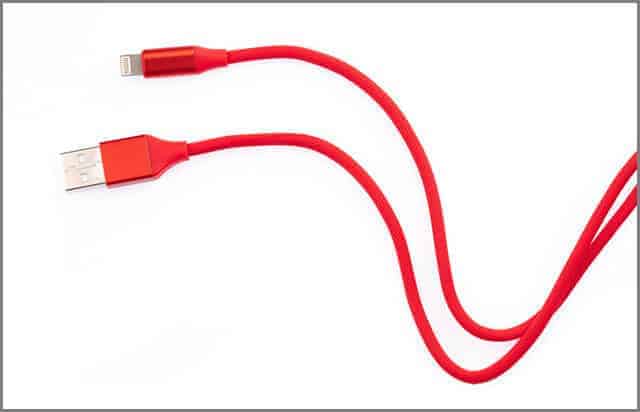
Figure 7: USB cable
USB Cable–Ethernet
Ethernet has a higher power requirement than a USB. It functions on a voltage of 48V DC and can supply up to 13 W of power over 100 meters, whereas a USB can only supply power of 2.5W over a maximum cable length of 5 meters. It makes ethernet more practical for telephones and security cams.
Ethernet has a higher power requirement than a USB. It functions on a voltage of 48V DC and can supply up to 13 W of power over 100 meters, whereas a USB can only supply power of 2.5W over a maximum cable length of 5 meters. It makes ethernet more practical for telephones and security cams.
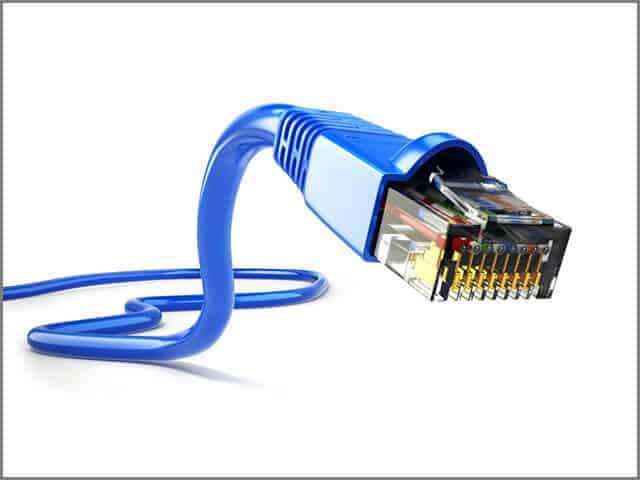
Figure 8: USB cable
Music Instrument Digital Interface (MIDI)
It allows music data via USB. Although USB is cheaper for close range devices, MIDI plug is more suitable for high-end devices that need to transfer data over long distances. It is because USB can connect with ground interference. However, this cannot happen with MIDI since it is isolated.
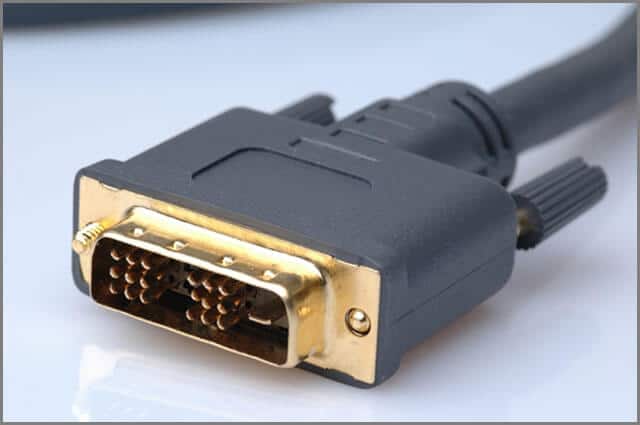
Figure 9: USB cable
USB Cable–eSATA/eSATAp
The eSATA is suitable for devices where high speed is required, like external hard drives. eSATA transfers data at a speed close to 6Gbit/sit. Comparable with USB 3.0 that has a transfer rate of 5Gbit/s and USB 3.1 with a transfer speed of 10Gbit/s. However, unlike USB, eSATA does not supply power to the external device.
On the other hand, eSATAp supplies power to the external device. It can supply 5V power to a 2.5-inch HDD/SDD and even 12 V to larger devices.
Just like the USB, eSATA allows hot plugging.
USB Cable–Thunderbolt
Thunderbolt is a new serial data interface that integrates PCI Express and Mini DisplayPort. The original version of Thunderbolt has two channels, each of which has a transfer speed of 10Gbit/s. Together, they result in a 20Gbit/s unidirectional bandwidth. On the other hand, Thunderbolt 2 makes use of link aggregation to combine the two Gbit/s channels into a bi-directional 20Gbit/s channel. Finally, Thunderbolt 3 possesses a 40 Gbit/s channel.
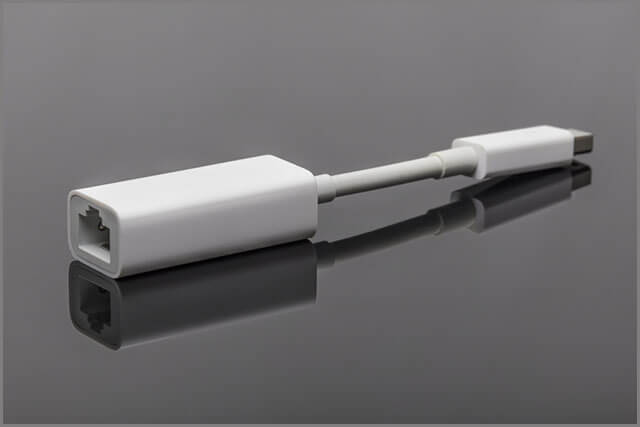
Figure 10: USB cable
CHAPTER 7: USB Cable Packaging
Due to their small size and lightness, USB cables are usually packaged in paper boxes or plastic boxes. These packaging materials are usually customized based on the manufacturer of the USB cables.
CHAPTER 8: USB Cable Price
meanwhile,The price of a USB cable depends on its type, quality, and manufacturer. Higher quality USB cables tend to cost more than minor ones. Reputable manufacturers are known for producing high-quality USB cables. Wiringo offers factory prices and guarantees duration and quality. Eventually,You can Click Contact Us To get an instant quote.
Get Your Free Sample!
Explore our custom services now. Leave your email, and we'll get in touch!


